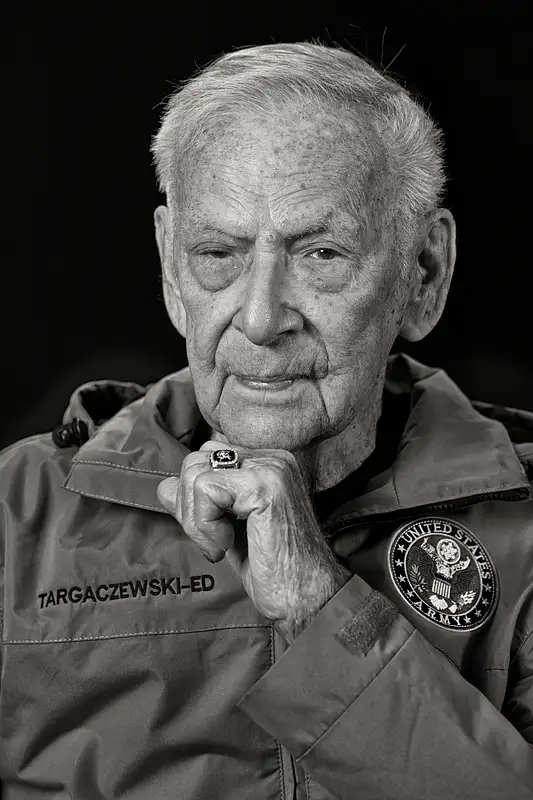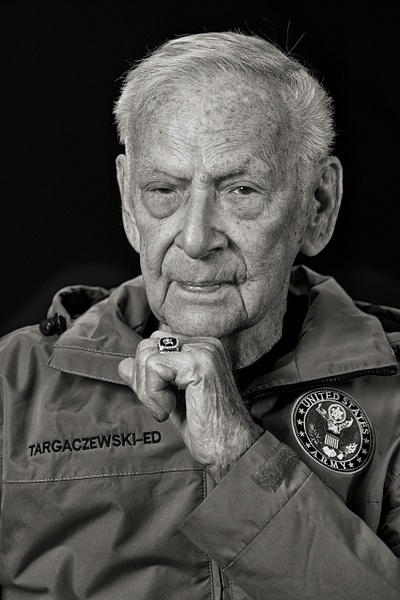Where can I donate?
I have created a way to accept donations to grow the project, use the WWII Veterans Portrait Series
Please email
The Veterans Portrait Series.
Mickey is a retired Navy Photographers Mate, Chief Petty Officer, and was the Leading Chief of the Navy's elite Combat Camera Group Pacific. Mickey's current focus is the Veterans Portrait Series, which documents veterans' stories of service. He is focused on our Worlds' Greatest Generation. The veterans of World War II.
Mickey interviews each Veteran, collecting and writing their service stories, archiving these notable historic figures and their stories for generations to come. Mickey has collected and displayed images and stories from over 100 warriors that at one point, signed the dotted line when our country needed their sacrifice of service most. Mickey continues to collect Veterans from all services for the Veterans Portrait Series. In 2019 this body of work was displayed at the Palm Beach Photographic Centre Museum from Nov 11, 2019 — to March 1, 2020.
Mickey and the project were in the national spotlight, featured on the Sunday Today Show with Harry Smith Today Show Link to YouTube. See the Google 360 Virtual walk through from the Palm Beach Museum Exhibit. Enjoy, and thank you for your help with this project. In 2022 Mickey has photographed over 25 more WW2 Veterans and will be hosting a print show in San Diego in November with an open house on Veterans Day.
Featured Veteran

James “Mike” Carmickle
United States Marine Corps
Master Gunnery Sergeant (MGySgt)
Korean War - Vietnam War
James “Mike” Carmickle was born on September 7, 1929, in Springfield, Illinois. His family later moved to California, where he spent his formative years in San Fernando and Santa Rosa. The day after graduating from Santa Rosa High School, Mike found his true calling: he joined the Marine Corps and immediately fell in love with the uniform.
His journey began in February 1947 at Marine Corps Recruit Depot, San Diego. After boot camp, Mike served a year as the base commander’s driver, earning a promotion to Private First Class. He then spent two impactful years as an instructor at the Marine Corps Institute (MCI) at the Marine Barracks in Washington, D.C. It was during this time that Mike was selected as one of the very first members of the Marine Corps Silent Drill Team. He performed at their inaugural event, which, though initially planned as a one-time demonstration, garnered such public demand that the platoon became a permanent fixture at Marine Barracks Washington.
Newly promoted to Sergeant, Carmickle reported to Camp Pendleton for Radio School. His training was quickly interrupted by a deployment to Korea, where he served in communications during critical operations like the Busan, Inchon, and Wonsan Landings with the 1st Battalion, 5th Marines. Mike endured the brutal winter campaign at the Chosin Reservoir in 1950. Upon his return, to Camp Pendleton, he met his wife Mary. They married three years later in 1958, beginning a remarkable 59-year marriage. Their early married life saw them stationed in San Miguel, Philippines, though Mary left the service when they started their family. After returning to North Carolina, Mike faced another deployment, this time to Guantanamo Bay, Cuba.
In 1962, Mike’s linguistic talents were honed at the USA Language school in Monterey, California, where he learned Arabic. He then embarked on a three-year tour with the NSA, putting his new skills to use. A deployment to Cyprus followed in 1964, though the unfolding Cyprus crisis necessitated his return. Mike was poised for retirement in 1967, but the Vietnam War halted his plans. He was deployed to Vietnam, serving in communications during the intense Tet Offensive, where he earned another promotion. Upon his return home, he was asked to remain on active duty and was promoted to Master Gunnery Sergeant (MGySgt - E-9).
On June 30, 1969, Master Gunnery Sergeant James “Mike” Carmickle was Honorably Discharged. His distinguished service was recognized with numerous awards, including the Bronze Star with Combat “V,” the Navy Commendation Medal with “V,” and the Marine Corps Good Conduct Award (8), alongside many Unit and Service awards.
FREQUENTLY ASKED QUESTIONS
Where are you located?
I live in the San Diego area but have traveled to many locations to interview and photograph Veterans.
How Long is an Appointment?
Appointments usually last 1 hour.
But please free up time for Mickey to set up lights and cameras, hold the interview, and take some photographs for the project.
Do you accept reservations?
Yes is the simple answer to the question. Each appointment is set up as an individual session. Group sessions have been set up when I visited a senior living facility and the California Veterans Homes.









